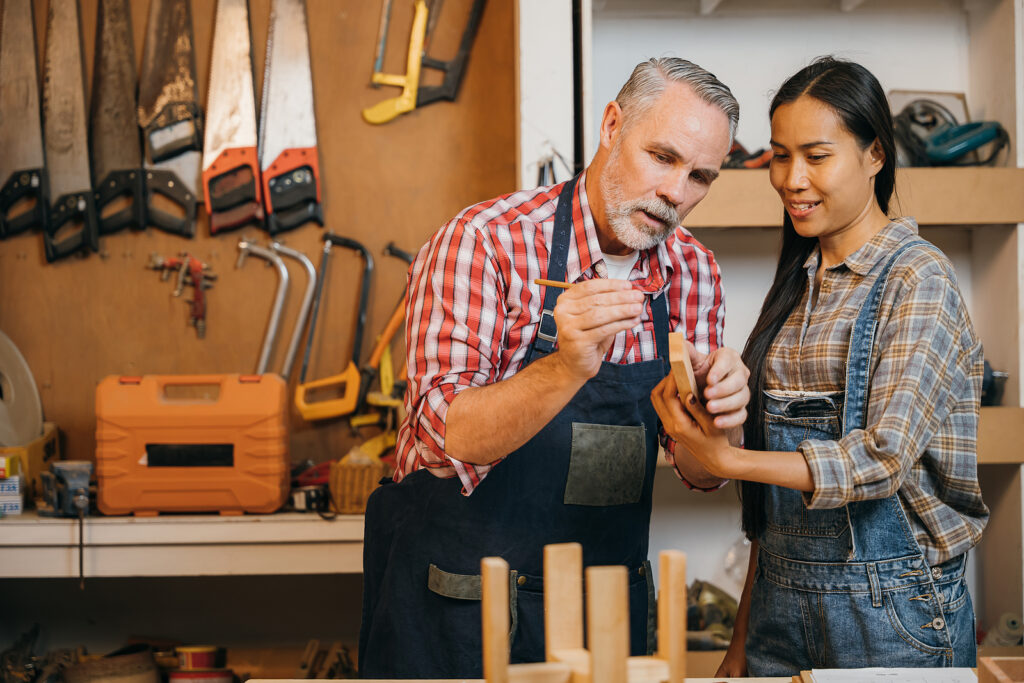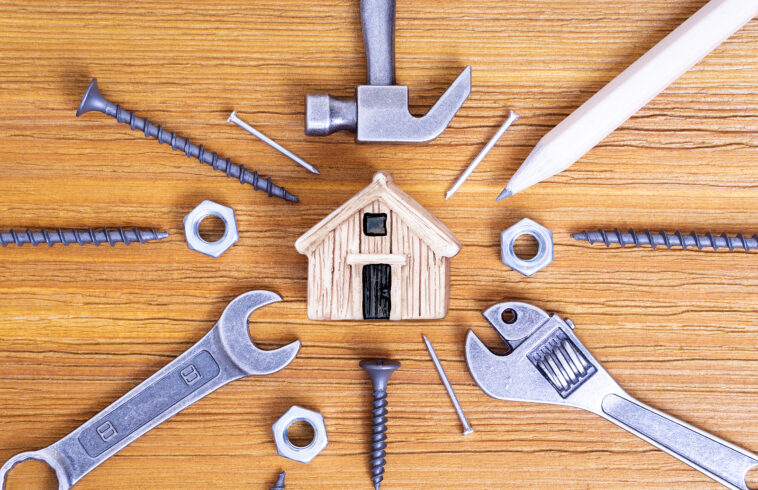What DIY Stands For
For me, the concept of “DIY” has truly carved out a special space in my life. DIY, which stands for “Do-It-Yourself,” isn't just a phrase; it's a powerful movement that has touched various facets of my daily existence.
Whether it's tackling home improvement projects, immersing myself in crafting endeavors, nurturing my little garden, experimenting with new recipes in the kitchen, or even diving into the ever-evolving world of technology, DIY has left a profound and lasting impact on my journey. In this personal reflection, I'm excited to delve deep into the history and culture of DIY, sharing what it means to me and how it has transformed over the years.
The Origins of DIY: A Historical Perspective
In order to grasp the full significance of the contemporary DIY (Do-It-Yourself) movement, it is imperative to delve into its rich historical tapestry. The roots of DIY culture can be traced back through the annals of history, revealing a multifaceted evolution closely intertwined with the principles of self-sufficiency and resourcefulness.
DIY, as a concept, has endured for centuries, originating from the necessity of self-reliance in eras preceding industrialization. In times when access to goods and services was severely limited, individuals were compelled to engage in tasks such as crafting, building, and repairing on their own.
The emergence of the term “Do-It-Yourself” itself gained prominence during the early 20th century, marking a pivotal moment in the DIY narrative. During this period, it was predominantly linked to home improvement endeavors.
Publications like “The DIY Guide to Home Improvement” achieved widespread recognition and became household staples, heralding a new era of self-guided craftsmanship and innovation. This shift not only empowered individuals to take charge of their living spaces but also fostered a sense of autonomy and pride in one's ability to shape their surroundings.

The Benefits of DIY (Do-It-Yourself) Projects
- Cost Savings: DIY projects often cost less than hiring professionals for the same tasks. By doing things yourself, you can save on labor and service fees, making it a budget-friendly option.
- Customization: DIY allows you to personalize projects to your exact preferences. Whether it's home decor, clothing, or crafts, you have full creative control to tailor the outcome to your style and needs.
- Skill Development: Engaging in DIY projects is an excellent way to acquire new skills and knowledge. You can expand your expertise in areas such as woodworking, crafting, home improvement, or technology, enhancing your problem-solving abilities along the way.
- Self-Reliance: DIY fosters self-sufficiency and resourcefulness. It empowers you to take charge of various aspects of your life, reducing dependence on external services and helping you become more self-reliant.
- Sense of Accomplishment: Completing a DIY project provides a strong sense of accomplishment. Witnessing the tangible results of your efforts can boost self-esteem and confidence, motivating you to tackle even more challenging tasks.
- Creative Outlet: DIY projects offer a creative outlet for self-expression. They allow you to explore your artistic side, experiment with new ideas, and turn your imagination into tangible creations.
- Sustainability: Many DIY enthusiasts prioritize sustainability by repurposing items, reducing waste, and using eco-friendly materials. This eco-conscious approach contributes to a more sustainable lifestyle.
- Problem Solving: DIY projects often involve troubleshooting and problem-solving. Facing and overcoming challenges can enhance your critical thinking and analytical skills.
- Bonding Opportunities: DIY can be a shared activity, offering opportunities for quality time with family and friends. Collaborative projects can strengthen relationships and create lasting memories.
- Home Improvement: In the realm of home improvement, DIY can increase the value of your property. Small renovations, repairs, and maintenance tasks can enhance the aesthetics and functionality of your living space.
DIY in Different Domains
To gain a comprehensive understanding of the DIY (Do-It-Yourself) phenomenon, it's imperative to delve into its multifarious domains, each characterized by its own unique features and contributions to this vibrant cultural movement.
DIY in Home Improvement
One of the most iconic facets of DIY culture revolves around home improvement projects. This enduring tradition encompasses a wide spectrum of activities, ranging from constructing furniture to overhauling kitchens and bathrooms. Homeowners and DIY enthusiasts take immense pride in their capacity to tackle these endeavors, not only saving money but also tailoring their living spaces to their unique preferences. This realm has been a cornerstone of self-sufficiency in homeownership for generations.
DIY in Crafting and Art
Crafting and art serve as fertile grounds for the unfettered creativity that DIY embodies. Whether it involves knitting, woodworking, painting, or sculpting, individuals find solace and fulfillment in crafting handmade items. This vibrant DIY subculture has exerted a profound influence on society, giving rise to craft fairs, artisanal markets, and thriving online platforms dedicated to showcasing and trading handmade goods.
DIY in Gardening
The realm of gardening is another domain where DIY culture thrives. From cultivating one's vegetables to sculpting the perfect backyard oasis, gardening offers a profound connection to nature and a tangible sense of self-sufficiency. The DIY gardener possesses the remarkable ability to transform barren plots of land into lush, thriving landscapes, merging aesthetics and practicality in a harmonious union.
DIY in Cooking and Food
Within the heart of the home, the kitchen serves as a bastion of DIY ingenuity. From mastering intricate culinary recipes to preserving seasonal bounties, cooking enthusiasts exemplify the spirit of DIY. Preparing meals from scratch not only bestows greater control over ingredients but also fosters a deeper appreciation for the art of gastronomy. DIY cooking extends far beyond sustenance; it is an expression of creativity and craftsmanship.
DIY in Technology
In the digital age, DIY culture has transcended the physical realm and infiltrated the world of technology. Makers and hackers now engage in explorations of electronics, coding, and robotics, fashioning a diverse array of innovations, from custom computer configurations to 3D-printed gadgets. The DIY tech community thrives on the principles of open-source software and hardware, forging a dynamic ecosystem of innovation, collaboration, and democratized technological advancement.

The Modern DIY Movement
The resurgence and evolution of the DIY (Do-It-Yourself) movement in recent years can be attributed to a confluence of factors that have reinvigorated this age-old practice, transforming it into a contemporary cultural phenomenon. These factors extend beyond mere economic considerations, encompassing a broader spectrum of influences that shape the modern DIY landscape.
Economic Considerations: A Driving Force
Economic considerations undeniably serve as a pivotal driving force behind the resurgence of DIY in the modern era. In an age marked by increasing financial constraints, the cost-effectiveness of DIY projects has become a compelling motivation for individuals to roll up their sleeves and take on tasks themselves.
By opting for DIY over professional services, people can significantly reduce expenses while maintaining control over the quality and customization of their projects. This financial prudence has phone stand made DIY an attractive alternative across various domains, from home improvement to personal crafting.
The Digital Age: An Enabler of DIY
The advent of the digital age has revolutionized the DIY landscape in unprecedented ways. Central to this transformation is the proliferation of online tutorials, forums, and communities dedicated to DIY endeavors. The internet has democratized knowledge, making it easier than ever for individuals to acquire new skills and expertise in diverse domains
Online platforms offer step-by-step guides, video tutorials, and a wealth of information, empowering enthusiasts to embark on ambitious DIY projects with confidence. This newfound accessibility to guidance and resources has broadened the appeal of DIY, drawing in novices and experts alike.
Community and Creativity: Fueling the DIY Renaissance
Beyond the pragmatic allure of cost savings and the digital dissemination of knowledge, the modern DIY movement thrives on a sense of community and boundless creativity. DIY enthusiasts now have the opportunity to connect with like-minded individuals across the globe, sharing ideas, experiences, and creations through social media, forums, and local meetups.
These communities foster collaboration, inspiration, and support, making the DIY journey not only educational but also deeply fulfilling.
Innovation, driven by the desire to customize and personalize one's surroundings, remains a cornerstone of the modern DIY ethos. Whether it's revamping living spaces, crafting unique artworks, or tackling complex technological projects, the DIY landscape continues to expand, embracing new possibilities and pushing the boundaries of what individuals can achieve independently.
DIY and Sustainability
The modern DIY (Do-It-Yourself) movement is intricately interwoven with the global imperative of sustainability. Beyond its economic and creative facets, DIY has emerged as a potent force in promoting environmentally responsible practices and fostering a conscious, eco-friendly lifestyle. This intersection between DIY and sustainability is marked by a multitude of initiatives and endeavors that underscore the commitment of DIY enthusiasts to reduce their ecological footprint.
Upcycling and Repurposing: Redefining Consumption
At the heart of the DIY sustainability ethos lies the principle of upcycling and repurposing. DIY enthusiasts channel their creativity to transform discarded or unused items into functional and aesthetically pleasing objects. Old furniture, for instance, is meticulously refurbished, breathing new life into items that would otherwise contribute to landfill waste. This commitment to giving items a second chance aligns with the principles of the circular economy, where resources are conserved, and waste is minimized.
Eco-Friendly Product Crafting: Nurturing Green Alternatives
DIY extends its sustainability influence to everyday products. Enthusiasts craft their own eco-friendly cleaning products, detergents, and cosmetics using readily available natural ingredients. By doing so, they not only reduce their reliance on commercial products laden with chemicals but also contribute to a cleaner and less toxic environment. This transition to sustainable, homemade alternatives represents a conscientious step towards reducing the environmental impact of consumer choices.
Homegrown Sustainability: A Step Closer to Self-Sufficiency
One of the most tangible expressions of DIY sustainability is the cultivation of one's food. Many DIY practitioners embrace gardening, transforming their backyards, balconies, or even indoor spaces into thriving edible gardens. By growing fruits, vegetables, and herbs, they decrease their dependence on industrially produced food, mitigating the carbon footprint associated with conventional agriculture and reducing packaging waste.
Mindful Consumption and the DIY Ethos
The DIY ethos fundamentally encourages a shift from mindless consumerism to mindful consumption. DIY practitioners engage in thoughtful decision-making, evaluating the environmental impact of their choices. Whether it involves choosing sustainable building materials for a home improvement project, crafting eco-conscious fashion items, or reducing energy consumption through DIY energy-efficient solutions, sustainability is a central consideration in every endeavor.
DIY as a Lifestyle
Beyond a mere pastime or hobby, DIY (Do-It-Yourself) has evolved into a comprehensive lifestyle choice for many individuals, encompassing a profound commitment to values such as minimalism, frugality, and self-sufficiency. This lifestyle shift reflects a holistic philosophy that transcends the confines of DIY projects, emphasizing the prioritization of experiences and a profound appreciation for simplicity.
Minimalism: Crafting a Life of Simplicity
At the core of the DIY lifestyle lies the concept of minimalism—a conscious choice to simplify one's existence by decluttering both physical spaces and mental landscapes. DIYers actively engage in the deliberate reduction of material possessions, focusing on items that hold genuine value and utility.
The act of crafting, repairing, or upcycling objects fosters an intimate connection with one's belongings, fostering an understanding that the pursuit of fulfillment need not be tethered to accumulating possessions.
Frugality: Maximizing Resource Efficiency
Frugality and DIY are steadfast companions within this lifestyle paradigm. DIYers acknowledge that the pursuit of self-sufficiency and resourcefulness often entails financial prudence. By taking on tasks themselves, they frequently save money and reduce consumption, extending the lifespan of items, and minimizing waste.
The financial freedom achieved through frugality further enables individuals to invest in experiences, travel, education, and other enriching pursuits that contribute to a fulfilling life.
Self-Sufficiency: Nurturing Independence
Self-sufficiency forms the bedrock of the DIY lifestyle. Enthusiasts actively seek to develop skills that empower them to rely on their own abilities.
Whether it involves honing carpentry skills for home repairs or cultivating a vegetable garden to produce their food, the DIY ethos nurtures a profound sense of independence and resilience. This self-sufficiency extends not only to material aspects but also to a mindset of problem-solving and adaptability.
Experiences Over Possessions: A Core Value
Crucially, the DIY lifestyle places a premium on experiences over possessions. The satisfaction derived from creating, building, and problem-solving often supersedes the allure of acquiring material goods. DIYers prioritize activities that foster personal growth, skill development, and the cultivation of meaningful relationships. This shift in focus underscores the belief that a life rich in experiences is inherently more fulfilling than one centered on material accumulation.
DIY and the Digital Age
In the ever-evolving landscape of DIY (Do-It-Yourself), the advent of the digital age has heralded a profound transformation. This transformative synergy between technology and DIY enthusiasts has given rise to a dynamic and interconnected ecosystem, where online platforms, social media, and cutting-edge tools converge to redefine the possibilities of creativity and collaboration.
Online Platforms: The DIY Knowledge Hub
Online platforms have emerged as veritable treasure troves of knowledge and inspiration for DIY practitioners. Platforms like YouTube, Pinterest, and specialized DIY websites offer a vast repository of tutorials, step-by-step guides, and expert tips spanning diverse domains.
DIYers now have unprecedented access to a wealth of information, empowering them to embark on ambitious projects with confidence. Whether it's mastering woodworking techniques or learning intricate coding skills, the digital age has democratized expertise, making it accessible to anyone with an internet connection.
Social Media: The Global DIY Community
The digital age has not only revolutionized how DIY enthusiasts acquire knowledge but has also facilitated global connections within the DIY community. Social media platforms serve as hubs where like-minded individuals from around the world converge to share ideas, projects, and experiences.
These virtual communities foster a sense of camaraderie, collaboration, and mutual support. DIY practitioners can showcase their creations, seek advice, and engage in meaningful exchanges, transcending geographical boundaries to form a worldwide network of creativity.
Advanced Tools: 3D Printing and CNC Machining
One of the most transformative aspects of the digital age for DIYers is the proliferation of advanced fabrication technologies. 3D printing and Computer Numerical Control (CNC) machining have democratized the creation of intricate and custom-made objects.
DIY enthusiasts can now design and produce complex parts, prototypes, and artistic creations with precision and ease. This accessibility to advanced tools has expanded the realm of possibilities, empowering creators to realize their visions in ways previously unimaginable.
Open-Source Culture: Collaboration and Innovation
The digital age has also nurtured an open-source culture within the DIY community. Open-source hardware and software initiatives encourage collaboration, knowledge sharing, and innovation.
DIYers actively contribute to and draw from this collective pool of resources, fostering a culture of co-creation and improvement. This spirit of openness has accelerated the development of DIY projects, from custom computer configurations to 3D-printed gadgets.
Frequently Asked Questions
Q: What is the full meaning of DIY?
A: DIY stands for “Do It Yourself.” It refers to the practice of completing tasks or projects on your own, without the direct assistance of professionals or experts. DIY involves using one's own skills, knowledge, and resources to accomplish a wide range of tasks, from home improvement and crafts to repairs and creative projects.
Q: Why do people say DIY?
A: People say DIY for various reasons, including:
- Cost Savings: DIY projects often save money by avoiding labor costs associated with hiring professionals.
- Self-Sufficiency: Some individuals enjoy the sense of accomplishment and self-reliance that comes from completing tasks themselves.
- Creativity: DIY allows people to express their creativity and customize projects to their preferences.
- Learning Experience: It can be a valuable learning experience, as individuals acquire new skills and knowledge.
- Ownership: Completing a project yourself can give you a strong sense of ownership and pride in the final result.
Q: What else could DIY stand for?
A: While “Do It Yourself” is the most common meaning, DIY can also stand for other phrases in specific contexts. Some alternative interpretations of DIY include:
- Dietary Information for Youth: In a health or nutrition context, DIY could refer to educational materials or programs designed to provide dietary information to young people.
- Digital Image Yield: In the field of photography or image processing, DIY might represent a measure of image quality or resolution.
- Data Integration and Yield: In a technical or data-related context, DIY could be used to describe a process or system for integrating data and improving its yield or usefulness.
- Design It Yourself: In the realm of creative arts and crafts, DIY can sometimes be expanded to “Design It Yourself,” emphasizing the creative aspect of the work.
Q: What is the pronunciation of DIY?
A: DIY is typically pronounced as three separate letters: “D,” “I,” “Y.” You say each letter individually: “dee-eye-why.” In casual conversation, it is often pronounced as “dee-eye-why,” with each letter sounded out.
Conclusion
The DIY journey has profoundly shaped who I am today. It began as a quest for self-sufficiency and cost savings in home repairs but has since grown into a lifestyle characterized by creativity, sustainability, and a global sense of community.
The fusion of technology with DIY in the digital age has not only expanded my skillset but also connected me with a diverse group of like-minded individuals who share a passion for creating and innovating.
Beyond the tangible projects, DIY has taught me to prioritize experiences over possessions, embrace minimalism, and exercise financial prudence. It's more than just a hobby; it's a philosophy that guides me towards a more fulfilling, sustainable, and self-reliant way of life.
This ongoing journey continues to offer new opportunities for growth and self-discovery, reminding me that the DIY spirit is not only about what I can make but also about how I can live a richer, more purposeful life.
Sources
https://pubmed.ncbi.nlm.nih.gov/25279797/
https://www.researchgate.net/publication/262215071_The_Do_It_Yourself_State




